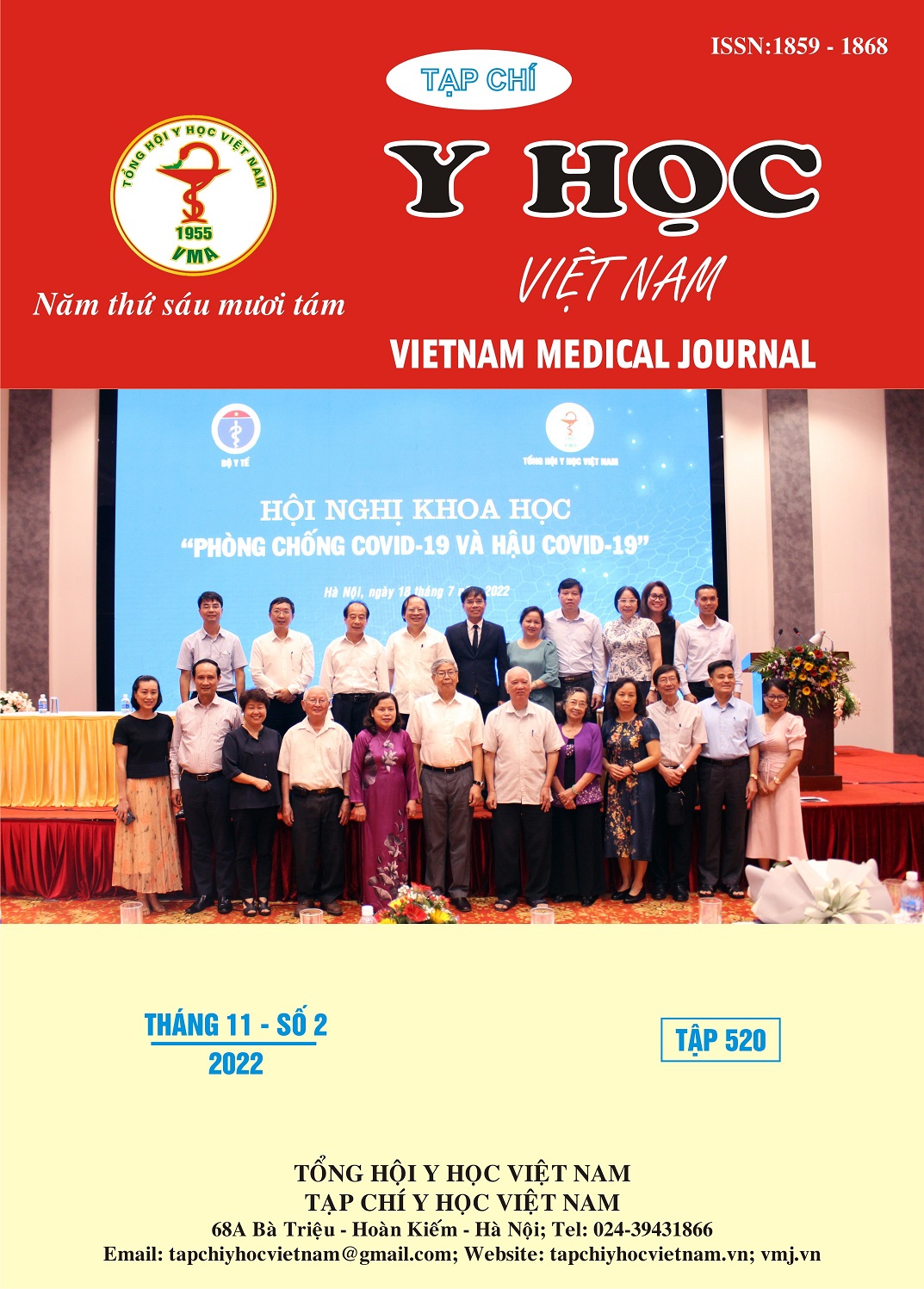THE PREVALENCE OF ANTI NMDA, AMPAR1/R2, GABABR, LGI1, CASPR2 RECEPTOR ANTIBODIES IN PEDIATRIC AUTOIMMUNE ENCEPHALITIS
Main Article Content
Abstract
Introduction: Autoimmune Encephalitis (AE) includes a group of inflammatory disorders caused by local or systemic effects of antibodies on the limbic brain of the central nervous system. This disease is rare and occurs in both adults and children. Recent studies showed a significant increase in the proportion of AE patients. Objective: To determine the rate of anti-NMDAR, AMPAR1/R2, GABABR, LGI1, CASPR2 antibodies, and some clinical and paraclinical features in pediatric autoimmune encephalitis. Materials and method: A descriptive study was conducted on 10 AE patients at City Children's Hospital from 01/2022 to 07/2022. Cerebrospinal fluid and plasma samples were collected to investigate autoantibodies by indirect immunofluorescence assay (IFA). Result: The positive rate of anti-NMDAR antibodies was 80%, AMPAR1/R2 was 10%, GABABR was 10%, and there have been no positive cases with anti-LGI1, CASPR2 receptor antibodies and simultaneously positive for many different types of antibodies. Conclusion: The positive rate of anti-NMDA receptor antibodies still accounts for the highest rate. Besides, it is crucial to determine other anti-receptor antibodies such as AMPAR1/R2, GABABR, LGI1, CASPR2, etc. For further early diagnosis and appropriate therapy, to bring the best treatment results for the patients.
Article Details
Keywords
Autoimmune encephalitis, Anti NMDAR encephalitis, Anti AMPAR1/R2 encephalitis, Anti GABABR encephalitis, Anti LGI1 encephalitis, Anti CASPR2 encephalitis.
References
2. Graus, F., Titulaer, M. J., Balu, R., Benseler, S., Bien, C. G., Cellucci, T., ... & Dalmau, J. (2016). A clinical approach to diagnosis of autoimmune encephalitis. The Lancet Neurology, 15(4), 391-404.
3. E., Martinez-Hernandez, E., & Dalmau, J. (2011). Encephalitis and antibodies to synaptic and neuronal cell surface proteins. Neurology, 77(2), 179-189.
4. Gu, Y., Zhong, M., He, L., Li, W., Huang, Y., Liu, J., ... & Xiao, Z. (2019). Epidemiology of antibody-positive autoimmune encephalitis in Southwest China: a multicenter study. Frontiers in Immunology, 10, 2611
5. McCracken, L., Zhang, J., Greene, M., Crivaro, A., Gonzalez, J., Kamoun, M., & Lancaster, E. (2017). Improving the antibody-based evaluation of autoimmune encephalitis. Neurology-Neuroimmunology Neuroinflammation, 4(6).
6. Hacohen, Y., Singh, R., Rossi, M., Lang, B., Hemingway, C., Lim, M., & Vincent, A. (2015). Clinical relevance of voltage-gated potassium channel–complex antibodies in children. Neurology, 85(11), 967-975.
7. López‐Chiriboga, A. S., Klein, C., Zekeridou, A., McKeon, A., Dubey, D., Flanagan, E. P., ... & Pittock, S. J. (2018). LGI1 and CASPR2 neurological autoimmunity in children. Annals of neurology, 84(3), 473-480.
8. Guan, H. Z., Ren, H. T., & Cui, L. Y. (2016). Autoimmune encephalitis: an expanding frontier of neuroimmunology. Chinese medical journal, 129(09), 1122-1127.
9. Xiaolu Xu, MD, Qiang Lu, MD, Yan Huang (2020). Anti NMDAR encephalitis A single-center, longitudinal study in China. Neurol Neuroimmunol Neuroinflamm, 7:e633.
10. Zhu, F., Shan, W., Lv, R., Li, Z., & Wang, Q. (2020). Clinical characteristics of anti-GABA-B receptor encephalitis. Frontiers in Neurology, 11, 403.


